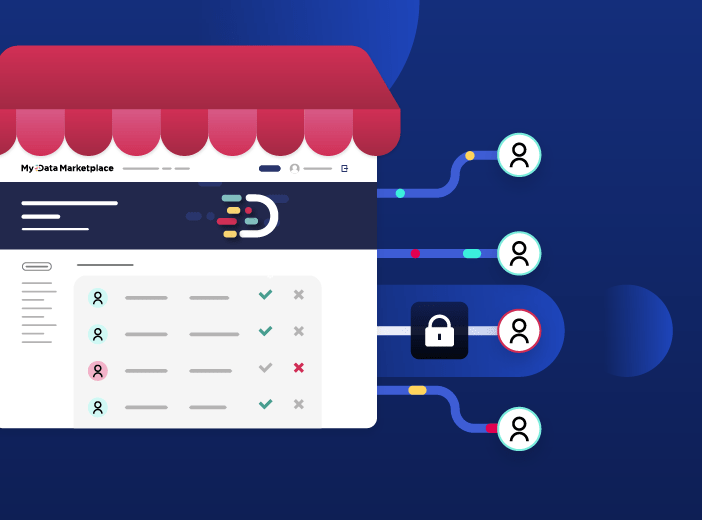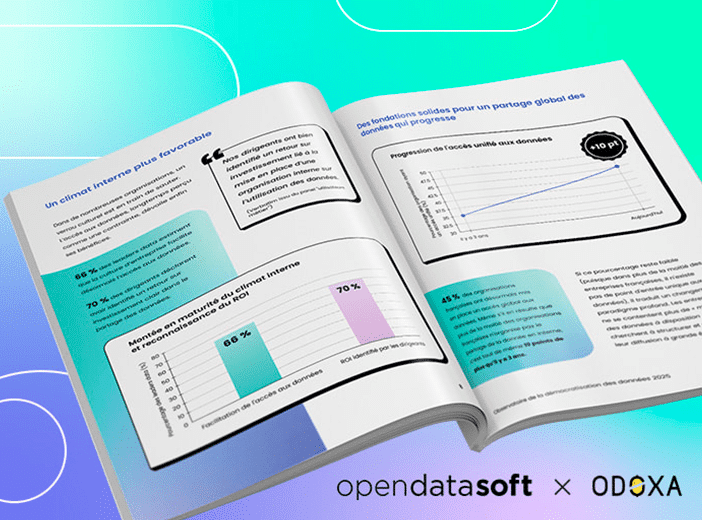Scaling smart city projects beyond the pilot phase

Delivering smart city success starts with pilot projects to prove that concepts benefit the community. However, often projects fail to scale beyond their initial rollouts, meaning their benefits are lost. We explain the importance of data portals to maximize the chances of project success by seamlessly sharing information with stakeholders.
Running pilot projects to test technology and its acceptance are a key part of any urban data exchange program. They provide the chance to see if projects deliver results and meet objectives, before they are rolled out more widely. They also give municipalities and cities the chance to collaborate with technology providers and build a working relationship that then deepens to benefit both sides.
However, many smart city projects don’t make it past the pilot stage, even if the initial results appear strong. Often this is due to a lack of buy-in from external and internal stakeholders, demonstrating a need to better communicate and share progress and results. Data portals provide the perfect solution to bridge this gap. They enable information to be shared effectively with stakeholders, in easily understandable formats, creating momentum and understanding that helps ease the path to fuller rollouts.
The importance of portals to smart city pilot project success
Data portals are an essential part of smart city programs, enabling the rapid, seamless sharing of data with internal and external stakeholders. Effective portals allow cities and municipalities to scale their pilots into full rollouts through multiple capabilities. These include the ability to:
- Collect data by connecting to all types of data sources, from business solutions to Internet of Things (IoT) sensors and open data
- Make it available to the right users through in-built governance and access management features, either directly on the portal, within dedicated workspaces, or by connecting to other applications in the data stack
- Enable rapid data discovery for users through powerful search and navigation capabilities
- Easily create visualizations and dashboards to put information in context, particularly for users who are not technical experts
- Deliver seamless data sharing with partners of all types, through export functionality via APIs, widgets and common formats such as CSV and Excel
Best practices to scale urban data exchange pilots with data portals
As cities and municipalities look to use technology to create more responsive, sustainable and efficient smart cities, many have scaled their projects beyond the pilot. Based on their experiences we have identified six key best practices that lead to success, all with an effective, centralized data portal at their heart.
Build a community around the concept
Often a project fails to scale as the people that will benefit from it don’t feel involved or consulted. Whether citizens, businesses, internal employees or elected officials, they fail to see how it helps them, meaning they don’t provide the support to take it to the next level. Keeping them informed and involved is key to overcoming this obstacle. This process starts with collecting their feedback and ideas. For example, the town of Morrisville in North Carolina runs regular sessions with citizens and businesses around its smart city program, feeding their views into forward plans.
Data portals provide the perfect way to inform the community and create excitement and momentum around projects. Based on requests from councilors, the City of Kingston in Canada created an interactive dashboard to show citizen customer service (311) requests. Available via its open data portal, this enables councilors to see what types of requests are being generated in their individual electoral wards and what percentage are being resolved. Thanks to this buy-in the dashboard is seeing growing usage, with other projects around transparency also identified and launched.

Ensure the project scales
Often, a pilot can be difficult to deploy across the organization as its initial technology architecture needs to be rebuilt to cope with the demands of a full-scale rollout. When creating pilot projects municipalities therefore need to strike a balance between the speed of delivering results and being able to easily widen its use. Essentially, the pilot needs to be treated as the first phase of the project, rather than a standalone initiative.
Data portals provide the ability to connect to a wide range of data sources and combine information seamlessly in a central location. This helps when creating pilot projects, ensuring data flows are robust, and data is standardized and meets municipal governance standards. The foundations are therefore in place so that projects can be scaled quickly if they meet their initial objectives.
Understand what you want to learn
Pilot projects provide the opportunity to test new technologies that can potentially inform future strategies. They may be funded by state or federal grants for example, reducing any financial risk to the municipality, but giving a chance to learn for the future. In the case of these pilot projects it is therefore vital to collect as much data as possible and use it to answer key questions benefitting the wider community.
For example, the town of Cary ran a trial of the CASSI electric autonomous shuttle in partnership with the North Carolina Department of Transportation. It has made all of the data around the project available on its open data portal, through dashboards and data stories, providing a completely transparent view of performance, including number of riders, reasons for service disruption and most popular times and days of week for usage. All of this gives vital insights to inform future strategies around mobility.

Set clear targets
Every municipal project has to have clear objectives and KPIs. This is particularly important for pilot projects as they need to demonstrate success in order to be scaled across the municipality. Therefore agree and set targets for smart city pilot projects, whether around efficiency gains in time or money, improved outcomes for residents or usage of a service. Publishing these targets via your data portal increases accountability and enables all stakeholders to monitor progress and to see exactly how successful pilots have been. Given that most people reviewing data won’t be experts, use visualizations to explain the project and its aims clearly, while always providing access to the raw data to ensure transparency.
As part of showing progress on its sustainability program, Morrisville has published a data story on its portal showing the benefits of its solar power array. This clearly details the energy produced, savings in emissions/utility charges and its positive impact on the environment.

Deliver focused data to stakeholders
Aligned with setting clear targets, pilot projects require continued buy-in from stakeholders, whether employees, elected officials or the wider community. They need to be kept informed of relevant information so that they can use it in their roles or daily lives.
Using a combination of open and internal data portals enables municipalities to deliver this information to specific audiences. For example, employees can see a more detailed view of data to help them with decision-making, while external audiences access interactive visualizations better suited to their needs.
The City of Salinas in California is sharing crime data both externally, through a data story on its data portal, and internally within its Community Alliance for Safety and Peace (CASP) program. This is a community initiative involving multiple groups to target youth and gang violence. This uses data, such as on crime rates, socioeconomic information and school performance to structure the program, focus strategies and approaches, and monitor progress. The resulting data-driven program has reduced youth violence by over 60% in the last decade.

Build an ecosystem
Smart city pilot projects enable municipalities to collaborate closely with both established tech companies and startups. They also provide the opportunity to work with neighboring administrations and state and federal agencies. Essentially, this enables the sharing of best practice, new ideas and innovation that accelerates smart city progress and overcomes common issues with pilot projects.
Collaboration is particularly important as often projects cross different jurisdictions, meaning that cities and towns need to work together to maximize benefits. Ensuring data flows seamlessly between participants is vital, requiring standardization of formats and the use of data portals to deliver it to everyone in understandable ways. For example, the towns of Cary and Morrisville in North Carolina are collaborating with other municipalities and cities in the state’s Research Triangle Area to explore how to standardize data capture and sharing as well as to share best practice.
Going beyond the pilot for smart city success
The range of potential smart city technologies is growing all the time. Running pilot projects is a central part of understanding which will best meet the requirements of particular cities and municipalities. Data portals are essential to ensure that pilot projects engage with the right stakeholders, deliver effective monitoring against objectives and provide the foundations to scale across the organization. This helps cities and municipalities focus their resources on the right projects that will deliver the best returns and outcomes for all their communities while becoming truly smart.
Want to learn more about the experiences of the City of Kingston and the town of Cary? Join our webinar on March 26 to hear first hand how their data portals are supporting greater transparency and increased engagement while reducing risk.

It can be hard to understand exactly what a data product is, given the many ways that the term is defined and applied. To provide clarity this article provides a business-focused definition of a data product, centered on how it makes data accessible and usable by the wider organization, while creating long-term business value.


